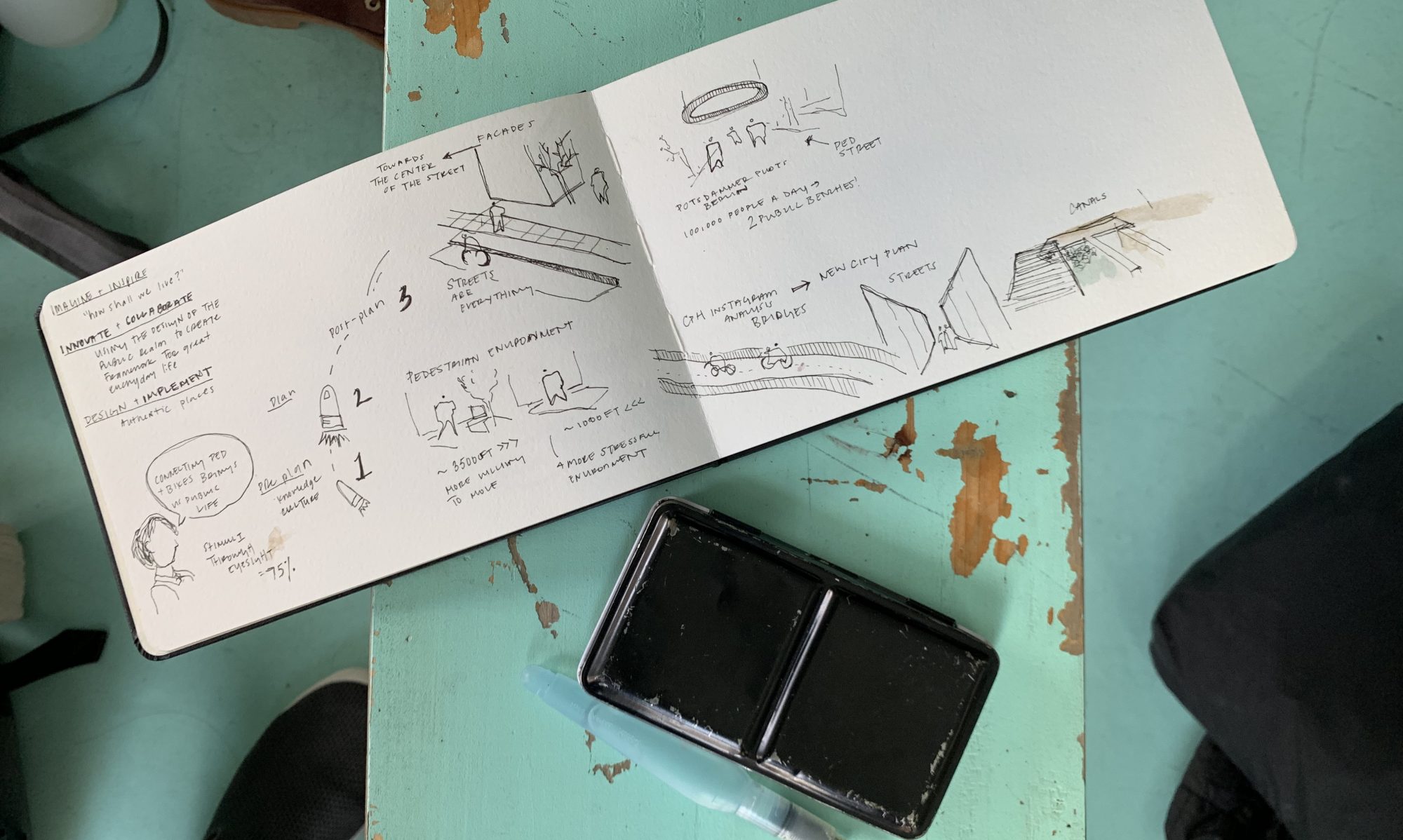The University District Neighborhood “West of 15th” is poised to undergo rapid and long-term transformation, brought on by burgeoning multi-family housing, an imminent light rail station, an expanded water front park along Lake Union, and planned green streets including a “neighborhood greenway.” A diverse group of partners passionate about the quality of their neighborhood have joined together to envision and enact the district’s future, advancing commercial revitalization, exemplary pedestrian and bicycle environments, and an urban design framework to guide development of the public realm.
Taking up the challenge of the district’s imminent transformation, our studio focused on imagining an active, creative, and high-performance “West of 15th” district, proposing design solutions for sites within the district with the goal of contributing to a high-functioning, just, and ecologically healthy city. Applying their unique skills, students worked in interdisciplinary teams at three different time and space scales: first, to understand and interpret existing forces and questions, expressed in temporary installations deployed at various sites throughout the district; then, to assess current patterns and imagine the optimum “blue sky” future health of a particular district system; and finally, to explore how the design of a site or street could contribute to the long-term visions of a public realm that is lively, artful, socially responsive and environmentally regenerative.
We were guided by principles, examples and teachings from Gehl Architects and our experiences together in Denmark and Sweden, made possible through the generous sponsorship of the Scan|Design Foundation. During our two-week September tour we walked both Copenhagen and Malmo’s public spaces, sketching their design qualities and analyzing their social performance using Gehl Architects’ methodologies. The group bicycled around these exemplary cities to experience their renewed neighborhoods, innovative architecture, and thriving public spaces. The staff of Gehl Architects, Copenhagen’s bicycle planners, Malmo’s Sustainability experts, COBE Architects and others were our guides, providing insight into the cities’ historical development and contemporary planning issues, elucidating design approaches to successful projects, and sharing personal perspectives. Back in the studio in Seattle, students applied the lessons they learned to our University District project, benefiting from an additional two weeks of expert guidance from Bianca Hermansen of Gehl architects.
We have many people to thank for this remarkable opportunity in teaching and learning. Without the support of the Scan|Design Foundation, we could not have acquired and applied the rich set of images and experiences from Scandinavia or so deeply integrated Gehl’s approach into our design work. We are sincerely grateful for Bianca Hermansen’s generous, clear and insightful teaching and critique, and to her and others at Gehl Architects for their fantastic lectures and tours in Copenhagen. Our ScanlDesign interns Ashle Fauvre and Peter Cromwell introduced innovative urban analysis methods, aided by Josh Kavanagh and UW Transportation Services’ generous provision of GPS units that we used to track our movement on foot and bicycle. We were additionally fortunate to have Lyle Bicknell serve as our guide both in Copenhagen and in the Seattle studio, contributing his inspired enthusiasm and seasoned urban design expertise to our learning. We are grateful to many people in Seattle who helped us understand the conditions, forces and potentials in the U-District and provided feedback on our work, and especially Dave LaClergue, Kristine Kenney, Rebecca Barnes, Howard Fitzpatrick, Don Shultz, David Amiton, David Graves and Anne Gantt for their presentations and multiple interactions with the studio. We are additionally ever grateful to Jess Michalak for her invaluable assistance throughout the study-tour, studio, and production of this document.
We thank you all, and hope that this work will be useful in offering thought-provoking, innovative, and responsive ideas for transforming the University District into a neighborhood that performs for all.
